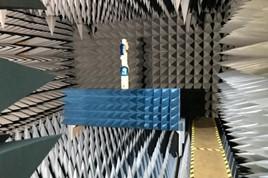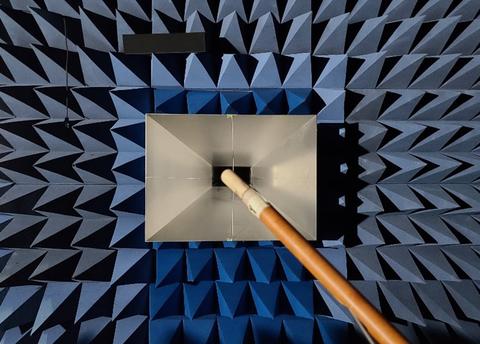Summary
The Field Strength Metrology Project develops measurements of free-space electromagnetic (EM) emissions to help evaluate electronic interference of electronic devices and systems. The project maintains the link to the International System (SI) of Units for EM field strength measurements. The project also provides information to standards organizations to help correlate measurements between various electromagnetic compatibility (EMC) test facilities. Our goal is to develop and evaluate reliable and cost-effective standards, test methods, and measurement services related to complex EM fields for EMC electronic devices and other health, defense, and homeland security applications.
Description

NIST calibrates electrically-small field probes from 10 megahertz – 40 gigahertz. These measurements are done in facilities that are periodically compared against other National Metrology Institutes in conjunction with the Bureau International des Poids et Mesures (BIPM). This assures international agreement in their performance and reduces uncertainties in these important areas of metrology that affect international trade.

EM field strength measurements are done in several types of chambers: transverse electromagnetic TEM cells, gigahertz TEM (GTEM) cells, and a fully anechoic chamber. The project is working on test methods for modulated field strength and time-domain measurements. The project is also developing field strength test methods for probes that can operate at frequencies above 40 gigahertz, as the industry moves towards employing higher frequencies in a wide range of applications. The Field Strength Metrology Project is also developing a Rydberg atom-based field probe for independent, absolute field strength measurements. This atom-based probe could greatly improve the accuracy and reduce the uncertainties in field strength probe calibrations.
Major Accomplishments
- Completed renovation of the fully anechoic chamber with an upgraded positioning system, and returned chamber to service.
- Completed a co-conical field generation system (CFGS) for the Air Force. The CFGS will reduce hazard probe calibration times from weeks to hours.
- Completed and documented high intensity radiated field (HIRF) shielding effectiveness tests on representative commercial aircraft (Boeing 737-200, Boeing 767-400ER, Bombardier Global 5000, Beechcraft Premier 1A Composite Business Jet); the results were delivered to the FAA.
- Described analytically and verified experimentally a new method to quantify the shielding effectiveness of physically small but electrically large enclosures (e.g., instrument and computer housings) in reverberation chambers; introduced the method into the applicable IEEE standard.
Associated Publications/Reports:
- K. Remley, G. Koepke, C. Holloway, C. Grosvenor, D. Camell, J. Ladbury, D. Novotny, W. Young, G. Hough, M. McKinley, Y. Becquet, J. Korsnes, "Measurements to Support Broadband Modulated-Signal Radio Transmissions for the Public-Safety Sector," NIST Technical Note 1546, April 2008.
- C. Grosvenor, D. Camell, G. Koepke, D. Novotny, R. Johnk, "Electromagnetic Airframe Penetration Measurements of a Beechcraft Premier 1A," NIST Technical Note 1548, August 2008.
- D. Camell, R. Johnk, D. Novotny, C. Grosvenor, "Free-Space Antenna Factors Through the Use of Time-Domain Signal Processing," in Proc. 2007 IEEE International Symposium on Electromagnetic Compatibility (Honolulu, HI), pp. 1-5, July 2007.

